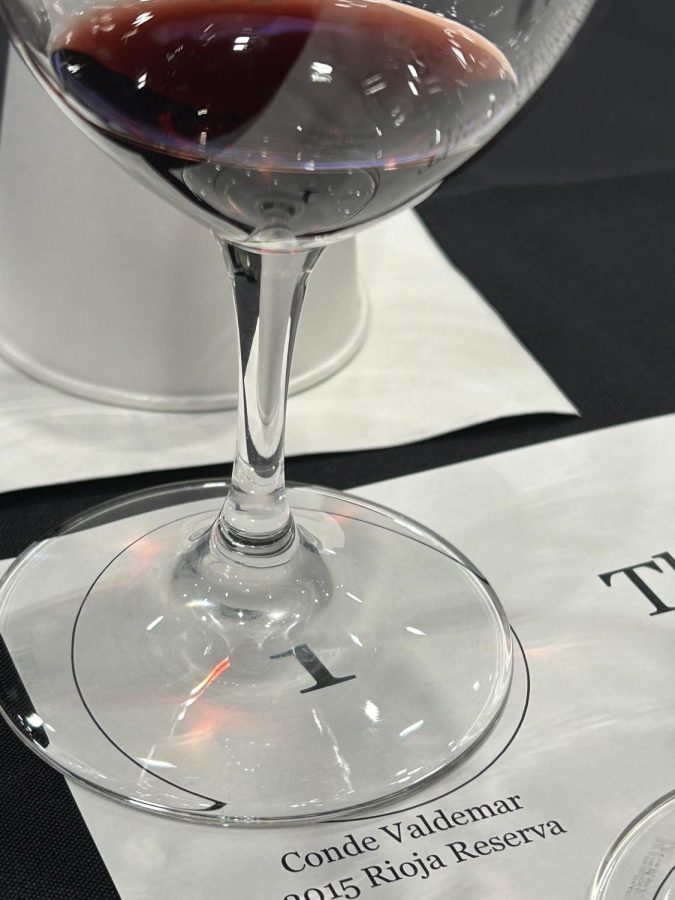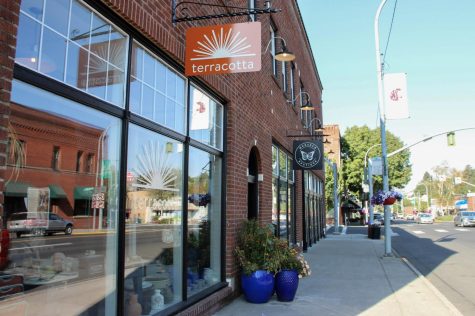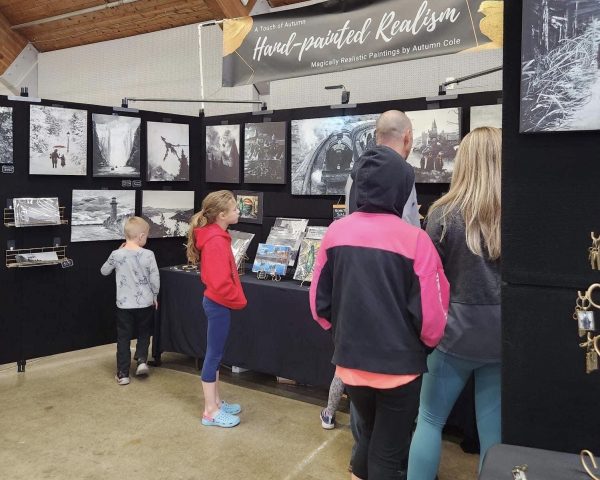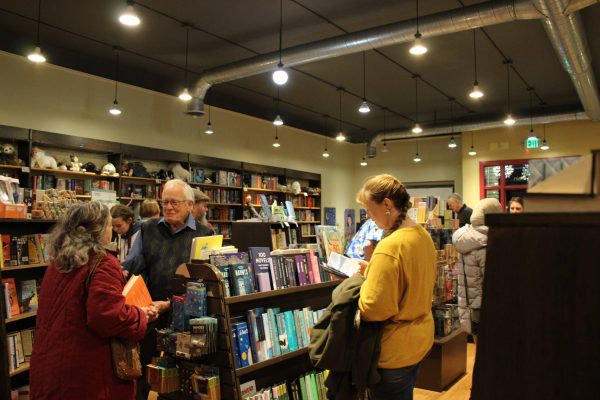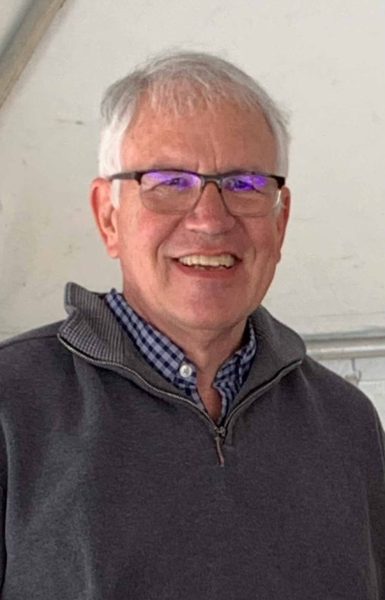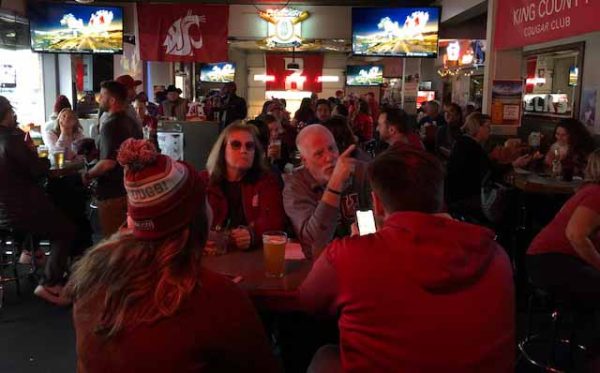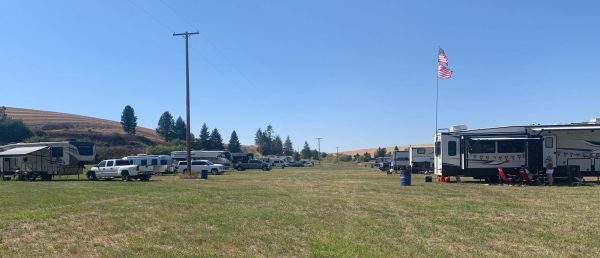Winevit: Winegrowers talk all things Washington wine
Wine industry professionals gathered for the annual convention in February
During the tasting, multiple wines were prepared for attendees, Feb. 7.
March 2, 2023
Winemakers from all over Washington state gathered in Kennewick last month for the annual Winevit convention to talk all things Washington wine.
Because of a testing schedule, I was only able to attend the event from Feb. 6–8 of the Feb. 6–9 event dates, so I will only be talking about the things that happened during my attendance.
The Washington Winegrowers association, created in 1983 and previously known as WAWGG, organizes Winevit every year and is committed to creating a unified voice for all winemakers and grape growers in the state of Washington.
On the first day of the conference, they began in the afternoon with a panel titled “Business development: Informed Decision Making in the Tasting Room and Beyond,” which focused on operating and marketing your winery to consumers. Briefly, at the end, the panel discussed jobs and how to draw in the next wave of students to the workforce.
One main note that I took from this panel is that, at the moment, workers that hold degrees and have experience in multimedia and digital marketing are extremely desirable to employers in the wine industry.
Later in the evening, the day finished with a network experience where students and prospective workers in the industry got to talk to professors, winemakers, viticulturists, and anyone you could think of that works in the industry.

Washington winegrowers learn the key characteristics of Tempranillo wine, Feb. 7.
On the second day, there was a grand wine tasting of Tempranillo in the early morning. This variety hails from Spain and has only recently been brought to the state of Washington.
There were seven different wines provided for the tasting. They were introduced and described by the people who were involved in making them to best explain Tempranillo as a whole and the flavor notes it brings to the table.
The wines tasted were as follows, in order: Conde Valdemar 2015 Rioja Reserva, Bodegas Hermanos Perez Pascuas 2019 Ribero Del Duero Crianza, Abacela 2019 Tempranillo Fiesta, Abacela 2019 Barrel Select Tempranillo, Idilico 2019 Tempranillo, Brian Carter Cellars 2019 Corrida Tempranillo Blend and Sigillo Cellars 2020 Tempranillo.
This event did a great job of highlighting how different a wine from the same varietal can be, and what goes into the process of crafting each wine.
Simultaneously, a research viewing was held for people in the industry to learn about undergraduate, graduate and professional research relating to pertinent topics in the wine industry. Boards were set up throughout the venue that presented research from all over the field.
In the afternoon, there was another session and panel titled “Leafroll: It’s Not About You, It’s About Us.”
This session discussed the grape disease leafroll, how it infects the plants, how it spreads and ways to manage it. It drove home how serious this disease really is to the industry as a whole, and how it is viticulturists’ responsibility to manage and protect the industry and themselves.
At the end of the session, there was a panel featuring vineyard owners who have dealt with this disease. The panelists shared their experiences and answered any questions from the audience and session runners.
Finally, on the evening of the second day, there was a session titled “Unlocking the Potential of your Wine,” which discussed oxidation reactions and how to monitor them.
The morning of the third day began with a session titled “Sustainable WA: What Business Value is Third-Party Certification?” This session’s main goal was to inform owners of vineyards and wineries on how to be more sustainable.
In this session, they talked about how sustainable practices can make it easier to market your business to investors and consumers, as well as give viticulturists a more effective operation and desirable product.
Afterward, there was a session titled “Learning from a Look Back,” which focused on the very beginning of the Washington wine industry and followed the industry’s many developments and progressions. At the end, the people who were involved in the industry from the start shared where they thought the industry should go in the future.
I found this session very intriguing because those people, who have been in the industry for approximately 40 years, brought valuable insight into the industry as a whole.
They discussed how, when the Washington wine industry first began around 40 or 50 years ago, it was uncharted territory. They said this was a huge change seeing as Washington now has the second-biggest wine industry in the US behind Napa Valley and one of the largest in the world.
Finally, at the end of the third day, there was a session titled “Efforts to Control Invasive Species (Japanese Beetle, Spotted Lanternfly), and the How/What/Why of Pathogen Management.” This session was mostly about these invasive pests and how people in the industry have dealt with them historically, if it worked and what to try next.
This session was very important as invasive species have been, and probably always will be, a huge problem.
When a species is introduced to an environment that has no natural predators or controls, these species are able to run rampant and are very hard to control. Informing those in the industry about them is very important to control them both industrially and environmentally.
Overall, if you are someone who works in the industry or is interested in working in the industry, I would highly recommend at least making an appearance at this yearly event.

